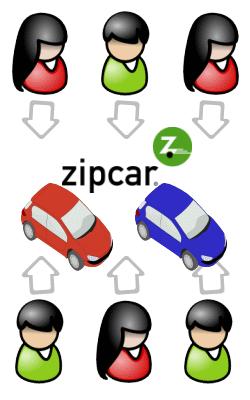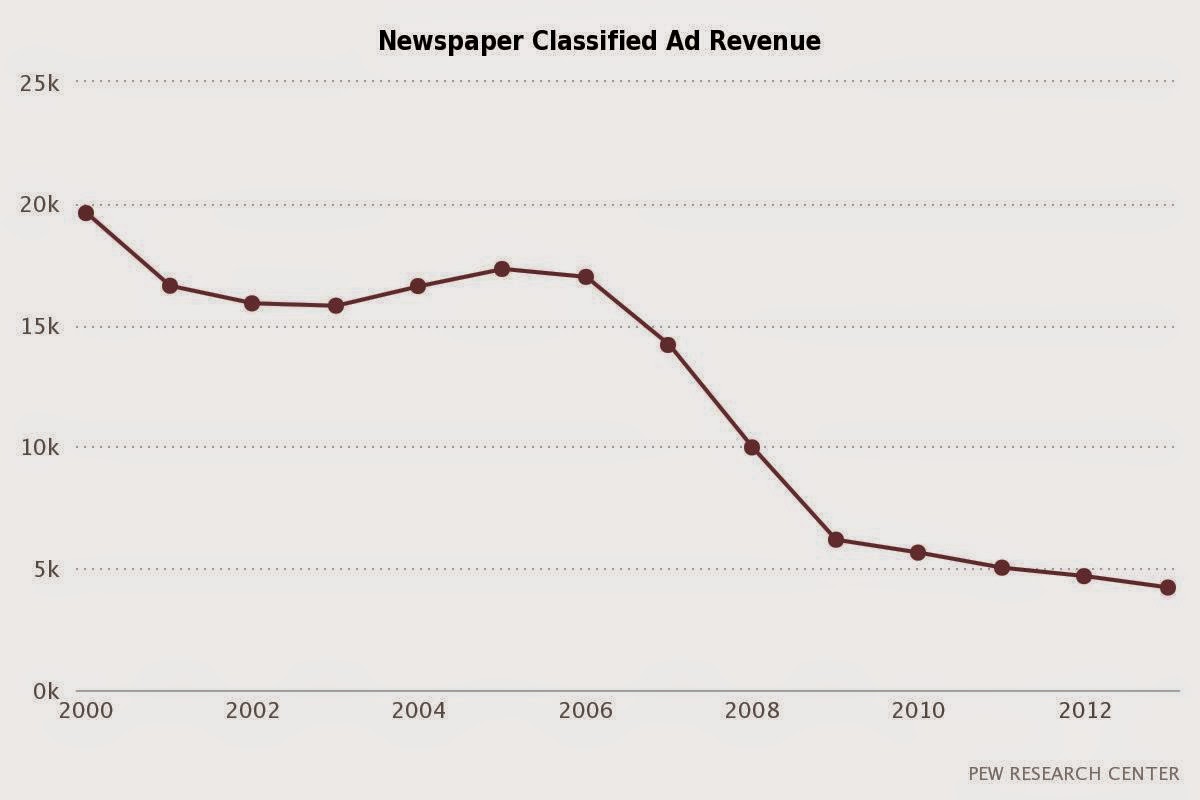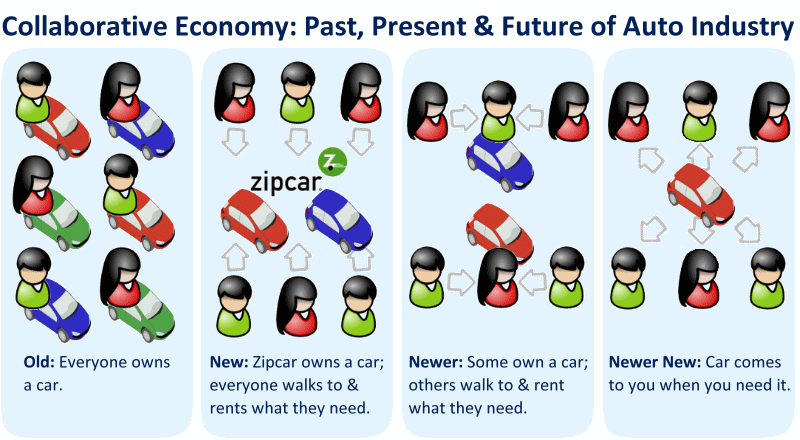Tweet
Tools like Facebook, Twitter, Yelp and Flickr have taught people the power of sharing more widely and have begun to alter attitudes about privacy. Today, you live more transparently and share more information than you ever would have been able (or willing) to in the past.
Opinions, experiences, likes and dislikes that we used to share verbally to a handful of trusted friends and family today are captured, indexed and aggregated for all to see. The places you visit, the jobs you have held, the people you know, the food you eat, the teams you cheer, the hobbies you enjoy and the entertainment you love have become data points in a great pool of public information, permitting new ways to connect, commune, play, work, discover, complain, praise, influence and learn.
Too often, people think of social media only as the immediate and ephemeral information Twitter or Facebook presents in their news feeds. These real-time social feeds demand attention and can be at once enjoyable, distracting and annoying, but there is another way to think of social media, and that is as a persistent data layer. Social networks do not simply share your data in the moment but retain it so that tools and applications (and marketers) can later access, recall, combine, process and convert that data into useful information.
 |
Foursquare's new Swarm app,
alerts you to nearby friends. |
Here is an example of how the social data layer works: No one wants to be informed of every place that every friend visits, but when you are deciding where to eat, you may find it valuable to know where your friends are dining at the moment or which restaurants they frequent most often. What is noisy data in your news feed can be transformed into useful, relevant information when aggregated and presented at just the right time and right situation.
Photos are another example of how the information we share becomes part of the social data layer and enhances our lives. Images that we used to mount into forgotten photo albums are today posted online and tagged with dates, locations and people’s names for easy access and retrieval. This meta-data transforms the half a billion photos uploaded each day to Flickr, Instagram and Facebook from mere pictures to vital pieces of information that can be recalled at just the right instant. (Because I tag my Flickr photos and upload them with an Attribution-NonCommercial Creative Commons license, my photos can be found and used by others, such as the Indiana Public Media website.)
Facebook’s vision for the future is that you will check into a beach and discover that your parents visited that same spot two decades earlier—and look, they posted a picture! The social data layer can take something that seems meaningless at one time (old family photos) and make it available at another when that information will be pertinent and valuable (your parents sharing the same moment you are, separated by decades).
 |
| Photo: Roadsidepictures |
Of course, social media is not just about sharing pictures and status updates; it is also increasingly about the way consumers make purchase decisions. Take for example information you use to make choices about travel. When is the last time you purchased a Mobil Travel Guide? Once the indispensable travel bible for selecting hotels and attractions, the Mobil book series has been replaced by ratings and reviews collected by online travel agencies (such as Orbitz and Expedia) and ratings sites (like TripAdvisor and Yelp). In 2011, Forbes Travel Guide, which licenses the Mobile Guide, published its last set of guidebooks and launched its own Yelp-like site, Startle.com (which has since been retired and replaced with ForbesTravelGuide.com.)
It is one thing for social data to
inform and
influence your purchase decisions, but increasingly social is furnishing new ways to
procure goods and services. The next wave of change is not just peer-to-peer (P2P) information but P2P commerce. A new collaborative economy is growing with a shift away from traditional ownership and toward “peering,” offering new methods of sharing or renting goods and services that permit consumers to gain economic power, increase income, and save money.
Why purchase an expensive item when you can more economically rent or borrow it, instead? Why let the things you own sit unused when they can easily be converted into cash flow? Why drive anywhere with empty seats in your car when someone nearby is willing to pay you for a lift near your destination? Why rent a car overnight when you really only need it for an hour? Why spend your time doing chores you do not enjoy when you can easily find and pay someone to do those tasks? And now that you have more free time, why not offer your own talents and skills to neighbors willing to pay for what you have to offer?
Thanks to new technologies and new consumer attitudes, there today are different answers to these questions than in the past. This is the collaborative economy—new methods for people to collectively consume resources for mutual economic benefit.
We can illustrate the difference between the traditional ownership economy and the sharing economy by examining the old, new and newer way of procuring an automobile.
The Old Way is Selling, Buying and Owning
We are all well acquainted with the old way in the automotive business. One party (and its supply chain partners) manufactures, transports, inventories and sells the cars, while consumers buy, maintain, insure and own them.
 |
The old way: Lots of
underutilized cars |
The problem with this business model is that it is wasteful and expensive. The average car owner in the United States, Canada and Western Europe uses his or her car just 8% of the time, which means that an expensive and depreciating household asset goes underutilized the vast majority of time.
Buying, financing, maintaining and insuring cars devours a substantial portion of people’s income—transportation is the second highest category of household expenditure, according to the US Bureau of Labor Statistics. Automobile ownership also ties up large portions of our available assets; Pew Research Center found that equity in motor vehicles is the third largest non-retirement category of net worth for households worth $499,000 or less. In addition, the old ownership model in the auto business is also hard on the environment, as enormous amounts of energy go into producing, distributing and disposing of cars that mostly sit idle.
The old way will not die, at least not quickly. Just as ecommerce has not replaced physical malls, neither will the traditional auto dealership disappear as the sharing economy grows. Of course, while malls still exist, many struggle to survive and stay relevant, and their trials are hardly over; analysts estimate that one in seven malls will fail in the next decade as retail continues to transition online. Auto dealerships will face the same squeeze. The soft economy has meant difficult times for auto dealerships in recent years—over 4,500 disappeared (almost 20% of the industry) between 2005 and 2012—and consumers’ changing social consumption habits spell more trouble for the future.
The New Way is Business-to-Consumer Real-Time Rental
Zipcar represents the new way of conducting business. In this business model, Zipcar owns, maintains and distributes vehicles over a wide geographic area, and consumers rent only the car they need when they need it. Cars are utilized a greater percentage of the time, so waste is lessened and the impact on the environment is reduced. At the same time, Zipcar customers increase their liquidity and decrease expenses.
 |
The New Way: Zipcar owns cars;
fewer cars are needed or used |
I can use my household as a perfect example. When we sold our car and embraced a car-free lifestyle, my wife and I expected we would need to rent a Zipcar on at least a weekly basis; instead, we found we need one less than once every month or two. This experience is not unusual; research has found that consumers who carshare have 27% fewer vehicle miles traveled and make fewer trips.
For my household, the cost of Zipcar rentals, mass transit and grocery deliveries is far less than the expense of owning a devaluing car, interest payments, insurance, parking, gas and maintenance. We estimate we are saving approximately $800 a month by engaging in the sharing economy, thanks to Zipcar. (My wife and I live in the New York metro area, which is somewhat more expensive than most other locales, so the average savings per month enjoyed by ZipCar members is a bit less--Zipcar reports that members save an average of $600 per month compared to owning a car.)
Of course, Zipcar is not available in every neighborhood, nor is it feasible for Zipcar to scale into every suburban or rural nook and cranny. If Zipcar spreads itself too wide and thin, it may have automobile assets that do not get appropriately utilized. This is why a newer form of sharing economy model shows promise.
The Newer Way is Person-to-Person Rental
There is an even newer way of transacting business—a more peer-to-peer way—as represented by companies like RelayRides, Getaround, Hubber and JustShareIt. Unlike Zipcar, RelayRides does not own and maintain vehicles; it merely connects people who own cars with those who need transportation and wish to rent cars.
In this “newer” P2P commerce method, renters enjoy the same benefits as they would with Zipcar—access to nearby cars for short periods at a modest cost. This much is the same as the “new” form of social business, but this “newer” form also offers benefits to car owners. Automobile owners no longer need to let their expensive asset sit unused in the driveway but can, with little effort, increase the use of that asset and enhance their income.
According to RelayRides, the average car owner renting his or her vehicle is making $250 a month using the RelayRides platform. Some make less and others make more; one recent Yahoo article profiled a woman who has made $12,000 since 2012 renting out her Prius on RelayRides.
While Zipcar would lose money if a car it owned were only rented for $100 in a month, the same is not true for RelayRides' car owners; for them, that $100 is a terrific benefit that increases income and puts an otherwise underused asset to work. This is why the newer P2P business model can scale in ways Zipcar cannot. Zipcar needs to place cars in limited areas with sufficient population density, while RelayRide owners are happy to rent their car a day or two a month to people in their less-populated rural or suburban neighborhood.
The Newer New Way--On Demand and Automated
While the "new" way--a company owning and renting out cars--does not easily scale today, the future may be quite different as self-driving cars and carsharing converge to offer a "newer new" way. Ten or 15 years from now, services like Zipcar will not need to spread cars every few blocks in order to place them within walking distance of customers; instead, the car you want will arrive wherever you are and whenever you need it, delivering itself to your front door--the transportation you need on demand.

Want a private drive? Of course! Want to split trip costs but make an extra stop? The service is aware of someone nearby who needs a lift to a destination close to yours. Care to pick up a friend? The service can access your friend list and alert him or her that you are on the way. Late to your dinner reservation? No worries, the restaurant has been automatically informed of your delay and new ETA. Technology, transportation, peering behaviors and the social data layer will combine to offer services that were previously (and are presently) impossible.
The impact of this
Newer New way will be profound, bringing substantial and difficult changes to the entire automotive value chain. No part of the auto business will be left untouched, from automaker (fewer and different cars to produce) to dealer (fewer customers to sell to) to consumer (less ownership, more real-time rental, lower cost and risk) to maintenance (larger and more efficient facilities where driverless cars deliver themselves rather than neighborhood service centers scattered every flew blocks for the convenience of car owners.)
Today, it is estimated that each shared car under the "new" approach takes between nine and thirteen cars off the road. The "newer new" way will have an even greater impact, taking more cars off the road and bringing the advantages of carsharing to much wider areas. The benefits to consumers and the environment will be substantial, but the difficulties faced by the auto industry will only mount in the next decade or two. Much like the the rail business of the early 20th Century (that did not adjust for trucks, cars, planes and highways) or the retail business of the last decade (that struggled to adjust to online commerce), the collaborative economy will leave the car industry a much, much different business. And the auto industry is not alone.
How Will the Collaborative Economy Change Your Business?
There has been an explosion of creative energy and venture capital in both the “new” and “newer” business models, and not just in the auto industry. Today you can:
- Offer your services or find someone to complete a chore on TaskRabbit
- Rent a night on your sofa or secure a place to sleep on Couchsurfing
- Rent a designer dress on Rent the Runway;
- Be a guest at someone's home for dinner or share your culinary talents with like-minded people on EatWith;
- Rent a bike for an hour or a day using B Cycle
- Buy or sell used kids' clothes on Swap.com
- Host a strangers’ dog in your home through DogVacay
- Borrow or lend money to others using Lending Club
- Rent Lego playsets on Pley
- Find a space to work or rent out unused office space on PivotDesk
Each of these could further develop into their own "newer new" business model. Might a hotel chain, that today owns one property in a city with 300 identical rooms tomorrow offer 300 different rooms scattered across dozens of small locations, matching you to exactly the room you would most prefer? (You love shaker style furniture, a shower, a large desk, a small bed, healthy snacks and tea service downtown while your traveling peer prefers retro 50s decor with a tub, no TV, a king-sized bed, junk food and a coffee percolator uptown? No problem--everyone gets exactly what they want!) Might your money account automatically loan cash to trusted friends and collect interest without bothering you for approval, since your financial institution knows whom you trust and acts to maximize your return? Might drones deliver your hot and delicious meal at the moment you arrive home from work, created by a famed chef a continent away who beamed his creation to a culinary 3D printer near you?
Comparing the old, new, newer and future ways of commerce not only illustrates how the sharing economy works, it also demonstrates the changes that are coming to business. Just as the adoption of the Internet brought about a significant wave of disintermediation and reintermediation (with Amazon replacing Borders, Apple iTunes replacing Tower Records and Netflix replacing Blockbuster), the sharing economy will bring another such wave. Companies that offer the new products and services in the ways that consumers desire can acquire and retain customers, while the companies that fail to satisfy new consumer demand risk losing customers.
RelayRides will not replace Chrysler or Hertz, but it can have a significant impact on the marketplace without supplanting traditional competitors.
As noted in my blog post, even a small shift in consumer behaviors can bring about a significant change in margins and profitability for businesses. As noted by Umair Haque, author of The New Capitalist Manifesto, “If the people formerly known as consumers begin consuming 10% less and peering 10% more, the effect on margins of traditional corporations is going to be disproportionately greater, which means certain industries have to rewire themselves, or prepare to sink into the quicksand of the past.”
There is no corner of the economy that e-business has not meaningfully affected, and now the burgeoning sharing economy is bringing still more change to the business environment. In future blog posts, we will explore the collaborative or sharing economy in more detail and study how traditional firms can explore, adjust and flourish in this new, emerging economy.








.gif)













 How times have changed. Digital businesses are now at the top of the Fortune 500 (with Apple, Microsoft, Hewlett-Packard, Google and Amazon among the 50 largest firms in the nation.) Generational gaps still exist but are nowhere near as pronounced as they once were; in 2013, Pew reported that 59% of seniors go online. In the course of 13 years, the percentage of seniors online skyrocketed nearly 400%.
How times have changed. Digital businesses are now at the top of the Fortune 500 (with Apple, Microsoft, Hewlett-Packard, Google and Amazon among the 50 largest firms in the nation.) Generational gaps still exist but are nowhere near as pronounced as they once were; in 2013, Pew reported that 59% of seniors go online. In the course of 13 years, the percentage of seniors online skyrocketed nearly 400%.
